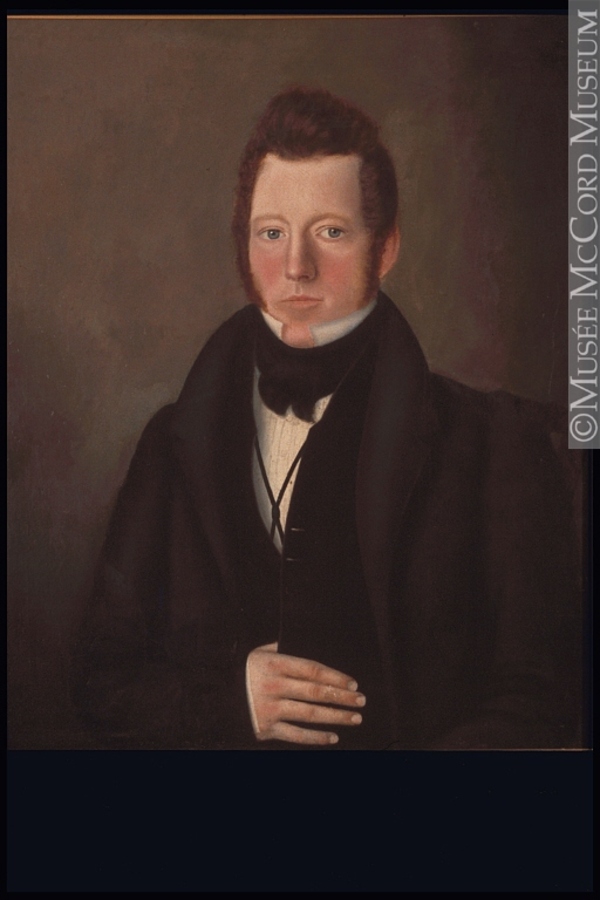
Source: Link
McVICAR (MacVicar, McVicker), ROBERT, HBC chief trader and author; b. before 1799, probably at Bowmore, Isle of Islay, Scotland; d. April 1864 at “The Station” (Thunder Bay), Canada West.
First employed as a Hudson’s Bay Company clerk at York Factory, 1812–14, Robert McVicar spent the next 14 years in the Saskatchewan and Athabasca country, participating in the stirring events of the Hudson’s Bay Company’s rivalry with the North West Company, which often involved physical conflicts, and rising in the HBC’s service. By the time he reached Île-à-la-Crosse in 1815, he had already acquired a reputation as a fighter; he was to clash at least twice with Simon McGillivray, the Métis son of William McGillivray*, and was held prisoner briefly by the Nor’Westers at Fort Chipewyan. His first winter command was at Fort Resolution, on Great Slave Lake, from 1819 to 1823. With the amalgamation of the fur-trading companies in 1821, McVicar became a chief trader. He gave assistance to the Arctic land expeditions of John Franklin* in 1819–22 and 1825–27 by purchasing and collecting supplies. It was Franklin, as justice of the peace, who married McVicar and Christina McBeath, the daughter of pioneers brought out by Lord Selkirk [Douglas*], at Fort Chipewyan, probably in May 1827.
The pattern of McVicar’s life altered with his transfer to the Montreal Department in 1827. He was sent to the Saint-Maurice District where competition from rival fur-traders was extremely keen. He was at first over-optimistic about overcoming this opposition, as he was about his own financial prospects when he retired from the HBC service in 1830 and settled in the Lac-des-Deux-Montagnes region. There he lived for a decade, building his home, Silver Heights, increasing his skill as a “practical farmer,” working with the local agricultural society, developing his interest in immigration policy and politics, and helping to raise a volunteer force to suppress rebellion in the province in 1837. By the 1840s, McVicar’s resources had dwindled and he was seeking employment, at a time when he did not have friends in office. Twice he considered a move to the United States. His hopes for a share in the development of Saugeen Township in the Huron Tract, and his ideas for the assistance of Scottish immigrants, sent in a series of letters in 1843 and 1844 to officials in the Department of Crown Lands, came to nothing, as did his request for an appointment as a crown land agent.
At Norval, Canada West, with his family in 1844, he finally received word of an appointment as inspector of clergy reserves for the Western District. The work was uncongenial and arduous, but it did pay 15s. per day for part of the next two years. He continued to reside in villages on the fringes of the Huron Tract. A number of his letters during this period were printed in 1853 as Letters on emigration from the British Isles, and the settlement of the waste lands in the Province of Canada. These letters to newspapers and to prominent officials urged the more rapid opening up of lands in Canada West, especially to Scottish settlement.
Eventually McVicar did receive an appointment as land agent and postmaster, apparently in 1860, but it was in the Lake Superior country, which he considered unsuitable for immediate settlement. In 1859 he had cleared a small piece of land several miles north of the HBC’s establishment at Fort William (Thunder Bay), built a shanty, and applied for permission to purchase one or two hundred acres. No action was taken on this request; the commissioner of crown lands decided in 1863 that McVicar was too old to be an effective land agent.
McVicar was survived by two sons and two daughters who found the financial success he had been denied, in spite of his petitions and impressive references. The transition from the fur trade to a leading role in Canadian settlement ventures proved difficult for one without capital or influential friends, but McVicar’s name continues to designate a bay on Great Bear Lake and the creek beside which he built the first house in what later became Port Arthur (Thunder Bay).
Robert McVicar, Letters on emigration from the British Isles, and the settlement of the waste lands in the Province of Canada (Hamilton, [Ont.], 1853), 1–116. HBC Arch. B.39/a, 1816–17; B.39/z, 11 Dec. 1817, 26 May 1818; B.89/a, 1815–16; B.181/a, 1819–21, 1824–25. Hargrave correspondence (Glazebrook). HBRS, I (Rich); II (Rich and Fleming).
Elizabeth Arthur, “McVICAR (MacVicar, McVicker), ROBERT,” in Dictionary of Canadian Biography, vol. 9, University of Toronto/Université Laval, 2003–, accessed November 28, 2024, http://www.biographi.ca/en/bio/mcvicar_robert_9E.html.
The citation above shows the format for footnotes and endnotes according to the Chicago manual of style (16th edition). Information to be used in other citation formats:
| Permalink: | http://www.biographi.ca/en/bio/mcvicar_robert_9E.html |
| Author of Article: | Elizabeth Arthur |
| Title of Article: | McVICAR (MacVicar, McVicker), ROBERT |
| Publication Name: | Dictionary of Canadian Biography, vol. 9 |
| Publisher: | University of Toronto/Université Laval |
| Year of publication: | 1976 |
| Year of revision: | 1976 |
| Access Date: | November 28, 2024 |